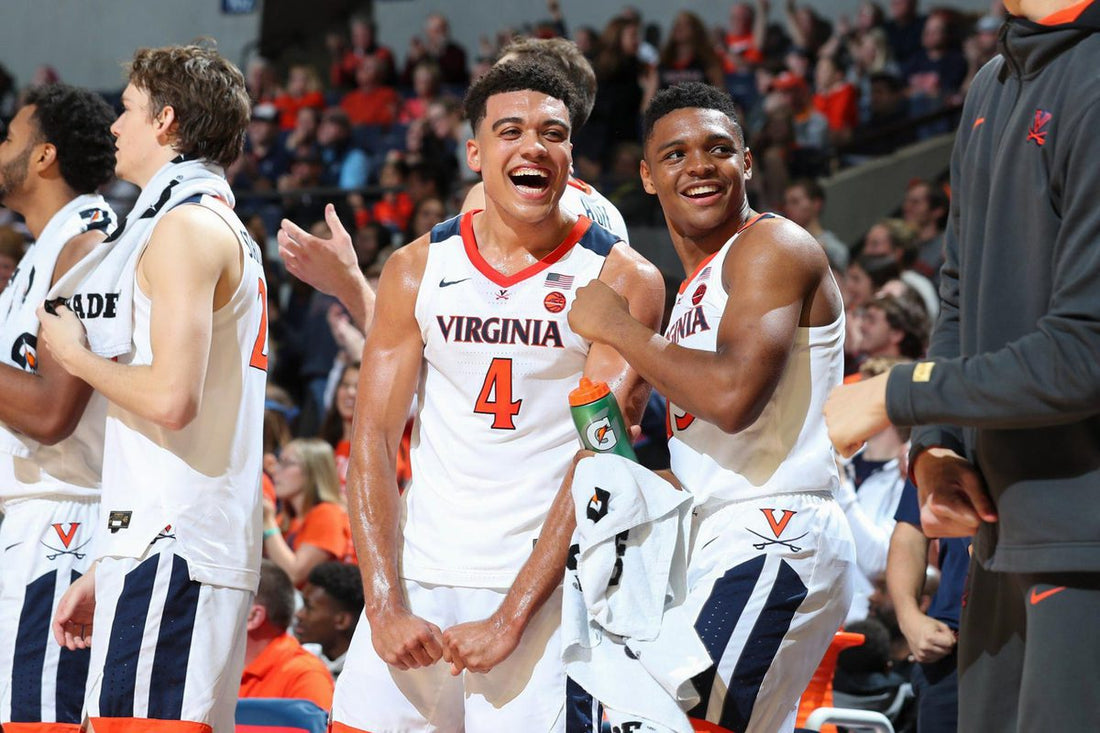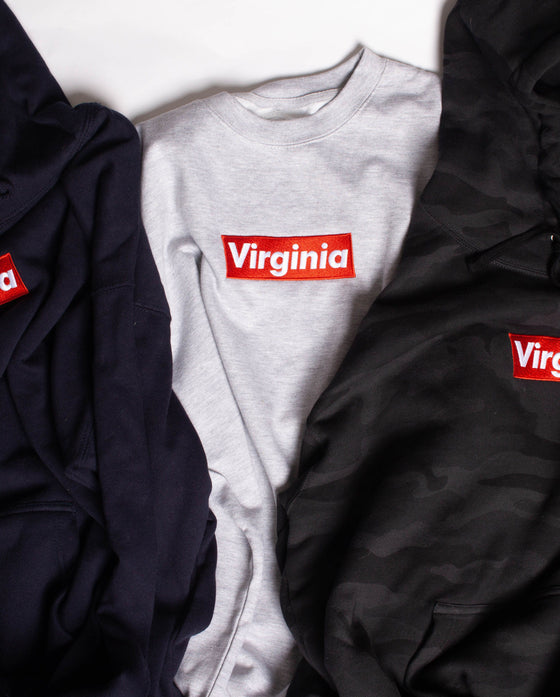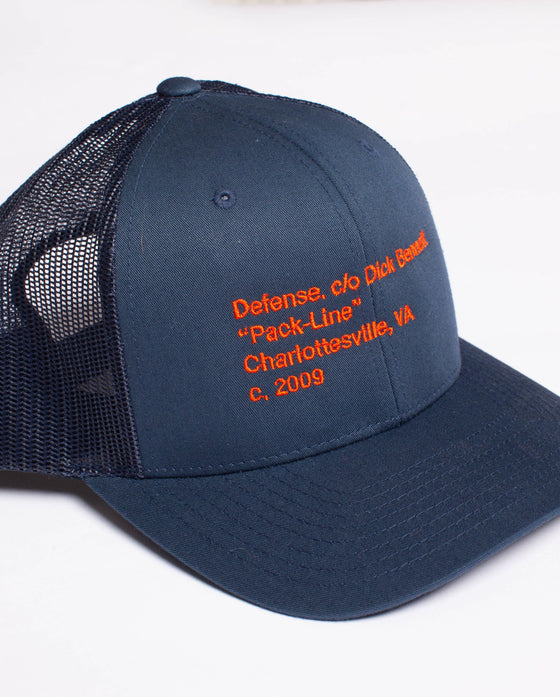Five Questions Heading into the 2020-2021 Virginia Basketball Season

(Photo - Matt Riley - Virginia Athletics Media Relations)
Premature as it is, with the 2019-2020 college basketball season now over, it’s time to take a look at what next year’s Virginia basketball team will be. To do so, here are the most prevalent headlines and questions heading into next season.
How good will Sam Hauser be?
Sam Hauser is an extremely versatile offensive player. A dead-eye shooter (44.5% career three-point shooting), intelligent screener, savvy post player, and a high IQ passer, the Marquette transfer is going to be a phenomenal addition to the Virginia rotation, and expectations are already ridiculously high. Diakite and Key have dubbed him as a potential All American and ACC Player of the Year. In fact, those two and Jay Huff have spoken extensively on the trouble Hauser gave them in practice.
Positionally, Hauser has roughly split his time between small forward and power forward. Next season, he’ll likely see the majority of his minutes at the four considering Virginia just lost their top two power forwards in Diakite and Key, and McKoy is the only returner who has played minutes at the position.
Coronavirus and Sports Shutdown: How Will We Cope?
On the defensive end, Hauser certainly is no Diakite, but he’s an aware off ball defender, an active rebounder, and he’s athletic enough to guard on ball. Hopefully, the year he spent redshirting allowed him to get comfortable in the packline defense and in Bennett’s offensive system as well.
If there’s one aspect of Hauser’s game that could use some improvement, it’s his individual play making. His ball handling is solid (11.9% turnover rate as a junior, 179th best nationally), and he’s sneaky good in the post, but he’s never been asked to be a team’s primary scorer since he’s played his whole career with the ball dominant Markus Howard. In his last year at Marquette, Hauser’s usage rate was 19.3%, while this past season, Diakite (24.8%), Clark (24%), and Key (20.9%) each were relied on more than he was as a junior. With the departures of Diakite and Key, Hauser will be asked to take on a much more significant role than he has in the past.
His offensive and positional versatility will be invaluable, and his experience should cushion the losses of Diakite and Key. Hauser has the potential to put this team over the top from very good to great, from a program revamping itself to a legitimate contender, and the Virginia faithful ought to be incredibly eager for his debut.
What role with the first years play?
There are high expectations for next year’s first year class consisting of Jabri Abdur-Rahim (#40 recruit via 247, #33 via ESPN), Reece Beekman (#60 recruit via 247, #46 via ESPN), and Carson McCorkle (#137 via 247). These three make up what is currently ranked as the twelfth best incoming class via 247. Despite the hype, they’ll face fierce competition for minutes in a rotation returning four guards who saw legitimate minutes this year.
Recruiting Rundown April 1st - HoozGotNext
There’s a possibility for a potential redshirt from one of the three, but, at this point in time, this is all speculation. Each of them brings something to the table that the team was lacking this season. This year’s team relied heavily on Kihei Clark (he played 91.7% of possible minutes at point guard), but this upcoming season, Beekman will likely be the backup point guard, and could even provide secondary ball handling when on the court with Kihei Clark. Abdur-Rahim may be the best pure scorer in his class, and could provide an immediate scoring punch on the wing, either off the bench, or perhaps even in the starting lineup. McCorkle adds shooting, as one of the premier shooters among the 2020 class, and could provide floor spacing right out of the gate
As it always is, the deciding factor in terms of playing time will be defense, and these three will need to learn the packline system quickly if they want to make an impact as first years.
How will the rotation work out?
In the two previous seasons, Bennett has run seven-man rotations. In 2017-2018, he ran an eight-man rotation. But next season, barring any redshirts or transfers, there will be seven guards fighting for playing time, and five more looking for minutes in the frontcourt. It’s not out of the realm of possibility that Bennett runs a nine or even ten-man rotation, in fact it’s even likely, but if he does, there’s going to be frustration. The last season that Bennett ran more than an eight-man rotation was 2016-2017, which saw three players transfer after the season concluded. That’s not to say that Bennett should trim the rotation to avoid transfers; obviously, deciding to not play a few guys will lead to more frustration. But, what’s apparent is that this year’s team is going to require some real managing.
Diving into who will be getting those minutes, Clark, Hauser, and Huff each seem to have their starting spot and role locked up for next season. Clark returns as the starting point guard and leader of the team, Hauser will take Diakite’s starting spot at the four, but may also rotate through to play some minutes at small forward, and Huff should be back in the starting center spot.
The UMBC Redeemed Shirts are Back!
After those three, there’s going to be significant competition for playing time. In the frontcourt, Caffaro looks set to be the backup center, while McKoy and Shedrick will fight it out for minutes as the backup power forward.
In the backcourt, things get interesting. I’d suspect that Reece Beekman finds a consistent role as the backup point guard, perhaps averaging somewhere around twelve minutes per game including five or so minutes per game with Clark on the court. Then, there’ll be five guys, Tomas Woldetensae, Casey Morsell, Kody Stattmann, Abdur-Rahim, and McCorkle competing for minutes at shooting guard and small forward. Frankly, it’s hard to predict who will get the edge among those five. I’d assume that, because of the way he came on late in the season, Woldetensae heads into next year with a loose grip on a starting spot. But after him, it’s a tossup.
Morsell brings a level of physicality and defensive prowess that, at the moment, nobody else does. But he was also awfully bad shooting the ball this season, at 17.6% from behind the arc. Hopefully, his shooting will improve, but that remains to be seen. Stattmann, at 6’7”, is the tallest of the bunch, but he too struggled mightily from behind the arc, shooting 26.9%. His 20.1% turnover rate (second worst on the team among guards) despite a 13.1% usage rate (lowest on the team among guards), also must get better for him to beat out the others for minutes in the backcourt. The first years are all unproven, namely on defense, and it’ll take time for them to fit into the system. Their playing time prospects hinge on how quickly they fit into Bennett’s system.
The in-team competition ought to be fierce, and, ideally, that will yield only superior on-the-court performances and not off-court concerns.
How will the team make up for the losses of Diakite and Key?
With the loss of Diakite and Key, Virginia is losing 41% of the team’s scoring, 42% of the rebounds, and 39% of blocked shots. The short answer to how they’ll be replaced, is that they won’t be, particularly on defense. Nobody on next year’s team boasts the defensive skillset that Key and Diakite do, specifically guarding bigs and wings. On offense, Hauser and Huff will be tasked for making up for the lost production in the frontcourt.
Five Takeaways from the 2019-2020 Virginia Basketball Season
But the experience and savvy that Key and Diakite brought to the table on the defensive end won’t be so easily replicated. It remains to be seen who will be the team’s top defender on the wing. Morsell has the potential to be that guy, but he’ll need to be more consistently productive on the other side of the ball. Hauser is athletic enough to potentially be that guy, but it’ll be a novel role for him, especially in his first season playing the packline. In the paint, Huff will need to improve his post defense, like he improved his defending of ball screens this season.
Expect to see a drop in defensive efficiency in the early going, but hopefully an offseason of growth for guys like Clark, Huff, and Woldetensae will result in more consistent offensive output.
Who will be the fourth scorer?
In 2018-2019, the big-ticket question was who would be the team’s fourth option after Guy, Hunter, and Jerome. Fortunately, in the NCAA tournament, Diakite stepped up, took on that role of the fourth scorer, and the rest is history. This past season, it was fairly clear that Diakite, Clark, Key, and Huff would be the top four guys, and the questions were how well would they perform, and who would join Clark in the backcourt.
Heading into next season, there appears to be an established big three of sorts, consisting of Clark, Hauser, and Huff. So, the logical progression is to wonder who will complement those three as the fourth option? With that comes a series of other question marks about the individuals who may fill that role. Does Woldetensae shoot consistently well throughout the season and solidify his defense? Does Morsell find his shot? Does Abdur-Rahim provide an immediate spark?
Of course, the fourth option could fluctuate game to game, and that’d be perfectly fine. As long as those three can rely on somebody else to contribute, this team has the potential to go far.
What are you must excited about for next season and what is your biggest concern?
Expectations for this team will be all over the place. With four newcomers, there are a fair number of unknowns, but the overall talent level of the team appears to be an improvement from the 2019-2020 team due to the development of the guys already in the program, and the arrival of the 2020 class and Hauser’s eligibility which should add an offensive flavor that the 2019-2020 team was lacking.
Of course, this is all assuming that the 2020-2021 college basketball season actually happens. But if it does, I’m fairly certain we’ll all be fortunate enough to find some restoration of normality in the melodic sound of a shot clock buzzer, and the methodical hum in the action of the mover blocker offense.


